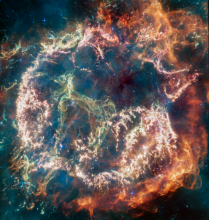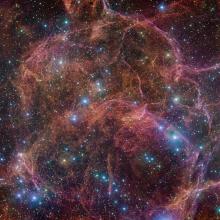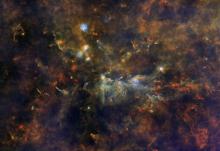Listen to today's episode of StarDate on the web the same day it airs in high-quality streaming audio without any extra ads or announcements. Choose a $8 one-month pass, or listen every day for a year for just $30.
You are here
Vela Nursery
Vela, the sail of the ship that carried Jason and the Argonauts, flutters quite low across the south on these early spring evenings, but only if you’re south of about Dallas or Tucson. And even then, it contains only a couple of moderately bright stars, so there’s not much to see.
If we could view that region in a few million years, though, it would be a different story. Several giant clouds of cold gas and dust appear to be giving birth to new stars. And some of those stars could be big, heavy, and extremely bright.
The biggest of these clouds is known as Vela C. It’s about 2300 light-years away, and more than a hundred light-years wide. In all, it’s more than 50,000 times as massive as the Sun.
Most of that mass is still in the form of gas and dust. But the cloud is splitting into smaller clumps of material. Gravity is causing the clumps to collapse. Eventually, some of them will condense enough to become new stars, making Vela C a stellar nursery.
In fact, there’s evidence that it’s already given birth to some stars. They’re extremely young — no more than a million years old, and probably a good bit younger. It’s hard to see them because they’re still embedded in cocoons of dust, which absorb most of their light.
Some of these stars are quite massive — perhaps 10 or more times the mass of the Sun. So when the dust around them clears away, they’ll shine thousands of times brighter than the Sun — lighting up the celestial sail.
Script by Damond Benningfield






